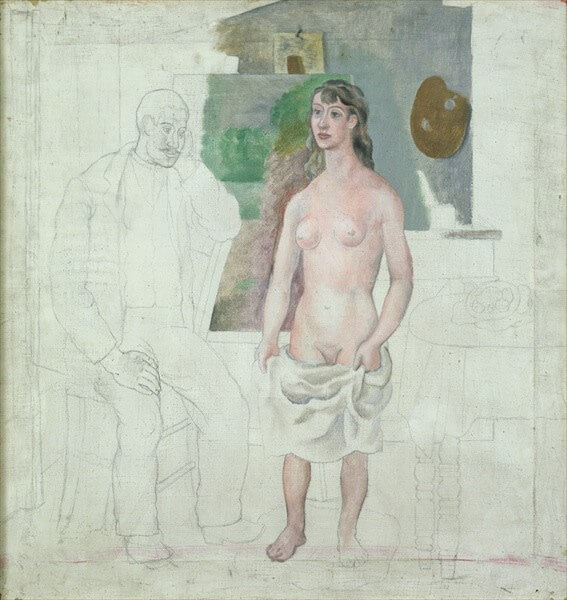Painter and His Model, 1914 by Pablo Picasso
Picasso's sojourn in Avignon in June 1914 coincided with his return to naturalism. The works from this period anticipate the classical revival of the early twenties.
We see the painter and his model in the studio, indicated by a palette and a canvas on an easel. The painter is seated, resting his head on his hand in a pose that recalls The Smoker of
Cezanne. He is looking at the model, Eva Gouel, his mistress, who died the following year. This is the only known portrait of her, which perhaps explains why it was never publicly shown
during the painter's lifetime.
This was the year in which Picasso was working on the integration of objects into his works without changing their original function. In Painter and His Model, the same principle led the artist to include an illusionistic
element in a room where other motifs - a chair, a table, a bowl of fruit, a painter (Picasso himself?) - are simply sketched. The model, however, is the only motif painted in a naturalistic manner during this period. The artist's
return to verisimilitude may be seen in his pencilled portraits of Max Jacob and Ambroise Vollard.
Picasso had a particular affinity with the subject of the painter and his model in a studio. He often represented it, treating it according to the pictorial idiom of the moment. There is nothing gratuitous about the choice of
subject-matter here. In representing his own activity as an artist, Picasso is proclaiming a manifesto: "By reintroducing resemblance, Picasso intended above all to do away with the finishing and filling-in inherent in traditional
painting. Using illusionistic techniques, he reinstated the concentration of the gaze that Cubist figuration had permitted. He demonstrated that he could assert or deny resemblance at will, without jeopardising the coherence of
the composition."





















